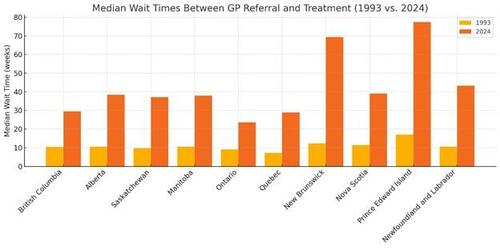Earlier in the summer, I argued in these pages that the combination of the coronavirus pandemic-induced income shocks, war, and climate crisis-led inflation made urgent the need to reframe the rural economy’s policy-making paradigm. The challenge grew as the summer wore on, and the gruelling heatwave gave way to unseasonal rains at the end of the monsoon. Yet, inflationary conditions persisted.
Since January, rural inflation has been higher than urban. In September, rural inflation was 7.6%, while urban inflation was 7.3%. The cost of food was the primary driver behind this. In September, the consumer price index (CPI) for cereal and products rose 11.53% year-on-year. This is the highest-ever annual inflation for cereals as per the current price index, with 2012 as the base year. Prices of vegetables, milk and eggs also rose sharply. The consequences of rising food prices on the rural economy, still hurting from the pre-pandemic slowdown and accelerated pandemic-induced economic shocks, are self-evident. Rural wages, which stagnated between 2014-15 and 2020-21 in real terms, are showing signs of depression in the first few months of the current financial year. Rural demand, reported through fast-moving consumer goods sales, remains weak. All indicators point to deepening agrarian distress.
The challenge is compounded by the fact that the primary policy instrument for responding to rural distress — food transfers through the Public Distribution System (PDS) that acted as the lifeline for rural India through the pandemic — now faces new risks. Climate-induced weather patterns played havoc with wheat, and now rice production faces another threat from unseasonal rains. This, combined with elevated global prices, meant that government procurement for wheat in 2022-23, as reported in this newspaper, stood at its lowest since 2008-09. Currently, government stocks of wheat and rice have depleted to a five-year low. This will likely put the Pradhan Mantri Garib Kalyan Anna Yojana (PMGKAY), the primary policy instrument for food security, extended till December, under pressure.
In the short run, I argue for a shift in prioritisation away from sole reliance on PDS to a focus on income transfers through employment generation. Increasing the Mahatma Gandhi National Rural Employment Guarantee Scheme expenditure is critical, especially as demand is still higher than pre-Covid-19 and several states are reporting a shortfall. But in addition, there is an urgent need to recalibrate the current policy approach to capital expenditure.
Rather than relying on new infrastructure projects, which are both capital-intensive and slow to start, the focus must be on the maintenance of existing infrastructure, as the Centre for Policy Research (CPR)’s Partha Mukhopadhyay has argued. From dams to rural roads and electricity distribution, existing infrastructure in rural India urgently needs maintenance. This is cheaper (for those worried about deficit targets) and more employment-intensive than mega high-speed rail projects. But, if done at speed, it will ensure that rural India gets the demand stimulus it desperately needs. Given the current conditions, rather than a one-size-fits-all approach, rural India needs a basket of policy levers that can be deployed with some flexibility.
Recalibrating capital expenditure also allows reframing the policymaking paradigm for the rural economy. The reality is that half of India’s manufacturing value addition and off-farm employment (2011 census) is in rural areas that are now morphing into small towns. However, the nature of this employment, as was visible in the mass movement of workers to subsistence agriculture at the pandemic’s peak, is precarious. One reason is that our policy approach to the rural economy ignores it altogether, treating it as a drag that needs basic safety nets to prevent starvation but not budgeting enough investments that will strengthen this structural transformation — roads, electricity distribution, sanitation, and urban housing. Rather than smart cities and high-speed rail projects, this is the infrastructure India needs, this is where our scarce public resources must be invested, if the rural economy is to become resilient.
Finally, the current conjuncture has also brought into sharp relief a critical structural tension in our food policy caused by the policy choices that resulted in a trade-off between food security and nutrition security. The capacity of PDS to ensure food security in rural India is primarily because of the cereal-heavy production regime that agriculture policy has historically incentivised. In good times when rural incomes were growing, rural diets started diversifying towards proteins.
However, this process has reversed with the pre-pandemic slowdown coupled with the pandemic shock. As highlighted by CPR, an indicator of falling protein demand is in the divergence between growth in official production estimates of milk (6.24%) and actual sales (2.5%-3.6%) in 2014-2021. As the government now grapples with depleting cereal stocks, it will need to strike a delicate balance between ensuring cereal security and moving toward incentivising both crop and dietary diversification through PDS. Moreover, the realities of the climate crisis make the need for crop diversification even more urgent.
Speaking at last month’s CPR dialogues, economic historian Adam Tooze reminded us of John Maynard Keynes as saying, “Anything we can actually do, we can afford”. The question is what we are willing to do. The pandemic, war, climate crisis and continued food inflation are a reminder of all that we have been unwilling to do for the rural economy. But dealing with the current moment requires policymakers to forge a new coalition of the willing. A resilient rural economy will be the backbone of our food and climate security in an uncertain world. With apologies to Keynes, we cannot afford an unwilling policy environment.
Yamini Aiyar is president and chief executive, CPR
The views expressed are personal















